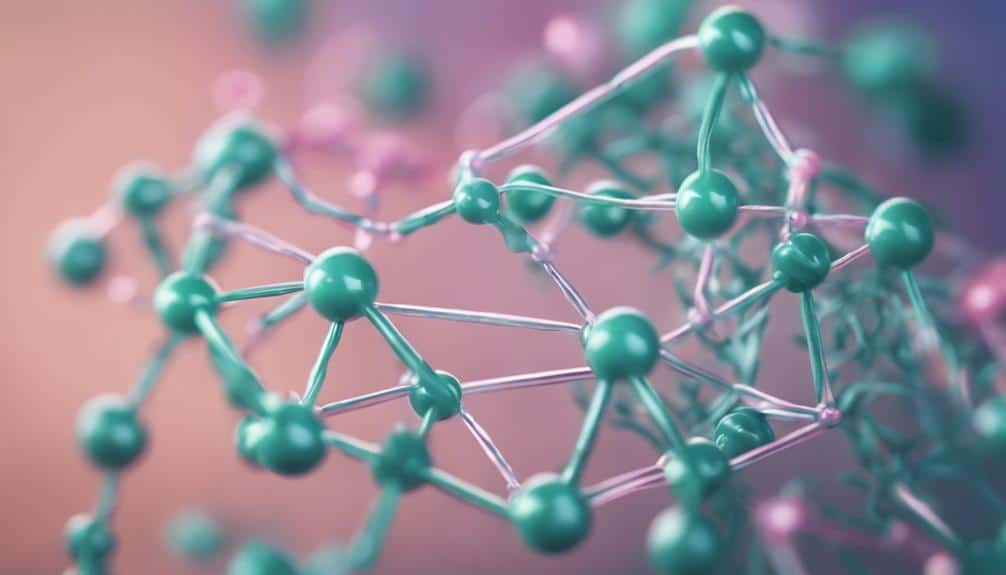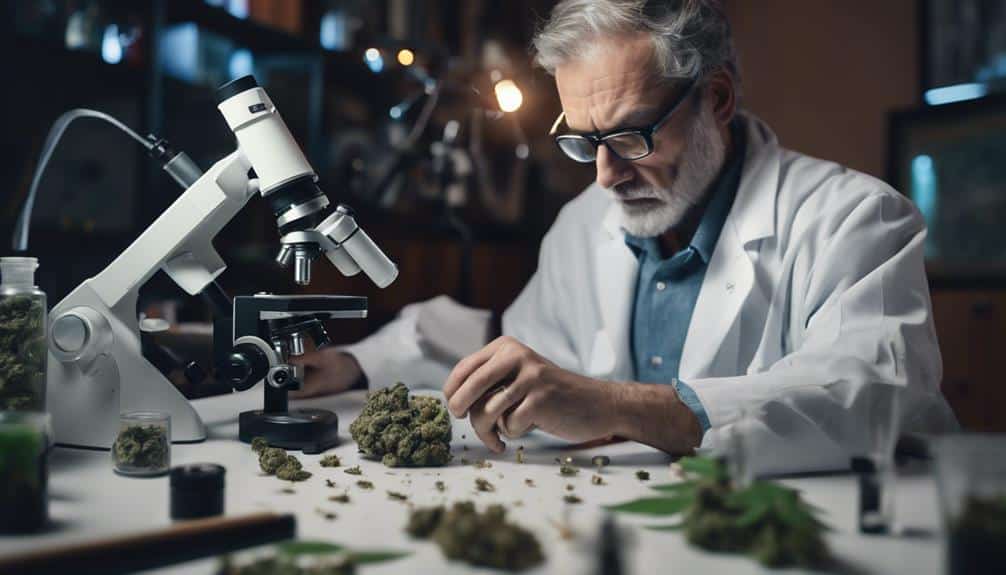Have you ever considered the power held by the less-known siblings of CBD and THC, also known as ‘minor cannabinoids’?
Table of Contents
You’ve likely heard about the therapeutic potential of cannabis. However, it’s the lesser-known compounds that are starting to ignite real interest in the medical community. Studies suggest they may hold a wealth of health benefits, from easing pain to reducing inflammation.
But can these minor players truly deliver on such significant promises? Let’s delve deeper and see what science has to say.
Understanding Minor Cannabinoids

To fully comprehend the therapeutic potential of minor cannabinoids, you first need to understand what these compounds are and how they interact within the human body. Minor cannabinoids are biologically active compounds produced by the Cannabis Sativa plant. They’re synthesized via a biological process called ‘Cannabinoid Biosynthesis’. This process involves converting chemicals, known as precursors, into a variety of cannabinoids, including both major and minor types.
You might be wondering now, ‘How are these minor cannabinoids extracted?’ A range of ‘Extraction Techniques’ is employed for this purpose. Solvent extraction uses substances like ethanol or CO2 to separate cannabinoids from plant material. Alternatively, steam distillation involves heating plant material to create vapor containing cannabinoids; this vapor is then condensed and collected.
Understanding these processes is crucial in fully appreciating the potential impact minor cannabinoids can have on human health. While they may be less abundant than their major counterparts, their unique chemical structures and interactions within the body have sparked significant scientific curiosity. As we continue to explore and understand the biosynthesis and extraction of these compounds, we move closer to unlocking their full therapeutic potential.
Potential Health Benefits
When it comes to potential health benefits, minor cannabinoids hold promising prospects in various therapeutic applications. Scientists have discovered that minor cannabinoids might offer significant health benefits despite their name. Their unique interactions with the human endocannabinoid system could potentially contribute to pain management, mood regulation, and even neuroprotection.
A key factor to consider is cannabinoid bioavailability, which refers to the proportion of administered dosage that reaches systemic circulation and becomes available at the site of physiological activity. Enhancing bioavailability is crucial for maximizing the therapeutic potential of these compounds. With a strategic approach, you can optimize therapeutic dosages of minor cannabinoids for more efficient absorption and utilization by the body.
It’s also important to understand that minor cannabinoids’ therapeutic benefits aren’t one-size-fits-all. Each individual’s genetic makeup, metabolism, and health condition can influence these compounds’ effectiveness. Therefore, tailoring minor cannabinoid-based therapies according to individual patient needs may yield optimal results.
Therapeutic Applications Explored

Let’s explore specific therapeutic applications where minor cannabinoids have shown potential efficacy. Cannabinoid biosynthesis, the process where these compounds are produced within the cannabis plant, has led to the discovery of numerous minor cannabinoids with potential therapeutic benefits.
While you may be familiar with CBD and THC, there’s a whole spectrum of minor cannabinoids that could revolutionize drug formulation possibilities. For instance, Cannabigerol (CBG) shows promise in combating inflammation, pain, and nausea. Meanwhile, Cannabichromene (CBC) may support brain cell growth and Cannabidivarin (CBDV) seems to have potential in managing epilepsy.
In mental health applications, Cannabinol (CBN) might help address sleep disorders due to its sedative effects. As for skin health, Cannabigerovarin (CBGV) could be beneficial for psoriasis. Notably, THCV may play a role in weight management and diabetes control.
These examples illustrate how minor cannabinoids can serve potential therapeutic applications. Harnessing these compounds’ power could expand our toolkit for addressing a range of health issues. The possibilities are indeed fascinating; it’s your mission to explore them further. So let’s continue delving into the therapeutic potential of minor cannabinoids.
Current Research Findings
Let’s focus on recent scientific breakthroughs that highlight the promising therapeutic properties of minor cannabinoids. Research has been exploring these compounds’ potential benefits; findings show promise in addressing various health issues.
Cannabinoid extraction methods have been refined over time, enabling more efficient isolation and purification of these compounds. This progress has led to an increase in studies revealing minor cannabinoids’ capacity to potentially reduce inflammation, manage pain, and even slow certain cancer cells’ growth.
However, regulatory challenges meet these findings head-on. The legal landscape around cannabinoids is complex and varies by region; this complexity somewhat hinders progress by limiting research scope and our ability to fully explore these compounds’ therapeutic potential.
Understanding these regulatory challenges is crucial. It’s not just about unlocking new treatment avenues but also ensuring they are accessible and safe for those who stand to benefit. The goal is to serve patients by providing them with effective and reliable options.
In this light, the significance of current research findings cannot be overstated. They represent a critical step towards realizing minor cannabinoids’ full therapeutic potential.
Future of Minor Cannabinoids

Given the promising findings from current research, it’s exciting to contemplate what the future may hold for minor cannabinoids. We’ll likely see advancements in cannabinoid biosynthesis, which could enhance these compounds’ therapeutic properties. The potential for tailored treatments based on minor cannabinoids’ unique chemical signatures is within reach.
However, as you navigate this evolving landscape, you’ll encounter regulatory challenges. Regulation around minor cannabinoids is still in its infancy. As a healthcare professional keen on serving others, you’ll need to advocate for comprehensive, science-backed policies and promote rigorous research to ensure minor cannabinoids are safe and effective for diverse patient populations.
Besides that, you’ll play a key role in educating your peers, patients, and the public about the potential benefits and risks of minor cannabinoids. The future of these compounds isn’t just about their therapeutic potential; it’s also about how well we understand, regulate, and communicate their use.
In essence, the future of minor cannabinoids is both promising and complex. It demands your active engagement and commitment to continue exploring their therapeutic potential while navigating the regulatory challenges ahead.
Conclusion
As you embark on your wellness journey, it’s important to recognize the unsung heroes of the cannabis world: minor cannabinoids. These quiet powerhouses could offer keys to new therapeutic paths. Current research paints a hopeful picture, suggesting a future where these humble compounds take center stage. So never underestimate these underdogs; they might just be your next significant stride towards health and wellbeing. Their potential, akin to a seed, is only waiting for the perfect conditions to flourish.
If this has piqued your curiosity and you’re eager to learn more about minor cannabinoids’ therapeutic potential, why not visit us at Cannabis Docs of Delaware? We’d be thrilled to guide you through these compounds’ fascinating world and how they could benefit your health journey. Our friendly and knowledgeable team is always ready to answer your questions. Don’t hesitate to give us a call; we’re here to help. We truly believe that the right knowledge can make all the difference on your path to wellness.

